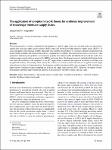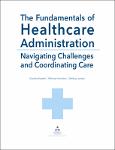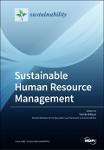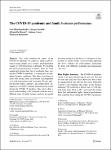Search
Author
- Marina, Dabić (3)
- Christa, Sys (2)
- Domingo, Ribeiro-Soriano (2)
- Gittell, Ross (2)
- next >
Subject
- kinh tế (26)
- Economics (12)
- Management science (7)
- Development Economics (6)
- next >
Date issued
- 2020 - 2023 (306)
- 2010 - 2019 (47)
- 2009 - 2009 (1)
Has File(s)
- true (354)
Search Results
This study analyzes the influence of human capital (HC) and altruism on small- and medium-size firms’ (SMEs) performance, contingent upon the effect of family involvement in management. HC, understood as the abilities, skills, and knowledge of firm personnel, has been proved to contribute to firm performance. Even more, firms’ outcomes benefit from aptitudes and also from attitudes, such as altruism. What is not so clear is if having a family character enhances the effect of HC and altruism on firm performance. Our results show that family involvement in management presents lights and shadows in its ability to extract all the potential of HC and altruism. By moving one-step forward in understanding these relationships, our findings contribute to the Family Firm, Human Resources Mana... |
With frequent political conflicts and public health emergencies, global supply chains are constantly under risk interference, significantly reducing supply chain resilience (SCR), especially for the knowledge-intensive supply chains (KISCs). To assess and improve the resilience of KISC, this paper uses complex network theory to construct a directed weighted network model suitable for KISC and expresses the SCR as a comprehensive capability that can resist risk and recover from it. Using quantitative indicators plus qualitative assessment to quantify the resilience index and identify the network key nodes. Two resilience improvement paths are proposed for KISCs, improving firms’ development capacity and industrial backup. |
This paper examines the impact of a policy reform in a municipality in Norway that extended to workers the right to self-certify sickness absence from work. After the reform, workers were no longer obliged to obtain a certificate from a physician to receive sickness benefits. They could call in sick directly to their line leader and had to engage in a counselling program organized by the employer. To estimate the effect of this reform, we contrast the change in sickness absence among employees who were granted the extended right to self-certify absence with absence among employees who had to obtain a physician’s certificate to be entitled to sickness benefits. We use both a standard difference-in-differences method and the synthetic control method to estimate the effect of the refor... |
Gaining more insights on how R&D&i subsidies are allocated is highly relevant for companies and policymakers. This article provides new evidence of the identification of some key drivers for companies participating in R&D&i project selection processes. It extends the existing literature by providing insight based on sophisticated, accurate methodology. A metaheuristic optimization algorithm is employed to select the most useful variables. Their importance is then ranked using a machine learning process, namely a random forest. A sample of 1252 cases of R&D&i subsidies is used for more than 800 companies based in Spain between 2014 and 2018. |
Previous literature shows that prevalent risk measures such as value at risk or expected shortfall are ineffective to curb excessive risk-taking by a tail-risk-seeking trader with S-shaped utility function in the context of portfolio optimisation. However, these conclusions hold only when the constraints are static in the sense that the risk measure is just applied to the terminal portfolio value. In this paper, we consider a portfolio optimisation problem featuring S-shaped utility and a dynamic risk constraint which is imposed throughout the entire trading horizon. |
Stationary retailers may introduce new technologies, such as augmented reality, to provide product information and recommendations and thus improve shopping experience. Examples of such augmented reality applications are magic mirrors that enable virtual try-on and may induce cross-buying intention. Based on an experimental scenario and the corresponding results from 301 questionnaires, we find that magic mirrors positively impact consumers’ cross-buying intention. Cross-buying behavior depends particularly on price attractiveness and the aesthetic appeal of the products. Further, men place less emphasis on price attractiveness when considering cross-buying options than women. |
The COVID-19 pandemic proved to be an unprecedented socio-economic crisis in the last decades. More than three years after its outbreak, there is still uncertainty regarding its future evolution. National and international authorities adopted a prompt and synchronized response to limit the adverse effects of the health crisis, in terms of socio-economic damage. Against this background, this paper assesses the efficiency of the measures implemented by fiscal authorities in selected Central and Eastern European countries to ameliorate the economic repercussions of the crisis. The analysis reveals that the impact of expenditure-side measures is stronger than that of revenue-side ones. Additionally, the results of a time-varying parameter model indicate that the fiscal multipliers are h... |
This book is written for those interested in acquiring a thorough knowledge base relative to the intricacies of the organizational theories, customs, and insights significant to the management of health service organizations. It examines the foundational aspects of leadership and management as they relate to establishing and maintaining the principles and practices within healthcare organizations. The book opens with a discussion on the differences between health, healthcare, and health care while providing an overview of healthcare management and organizational trends. It culminates in discussions of leadership, management, motivation, organizational behavior, and management thinking. Additionally, it discusses topics of information technology, teamwork, health disparities, organiz... |
The concept of sustainability is important for companies both in the case of SMEs and worldwide multinational companies. Some key factors to help a company achieve its sustainability objectives are based on human resource management. Sustainable human resource management is a typical cross-functional task that becomes increasingly important at the strategic level of a company. Industry 4.0 technologies, Internet of Things, and competitive demands, as signs of globalization, have led to significant changes across the organizational structures and human resource strategies of companies. The increasing importance of sophisticated human resource strategies in the life of companies and the intention to find optimal design and operation strategies for sustainable human resource management... |
This study examines the impact of the COVID-19 pandemic on corporate financial performance using a unique, cross-country, and longitudinal sample of 3350 listed firms worldwide. We find that the financial performance of family firms has been significantly higher than that of nonfamily firms during the COVID-19 pandemic, accounting for pre-pandemic business conditions. This effect is pertinent to firms with strong family involvement in management or in both management and ownership. We also identify the role of firm-, industry-, and country-level contingencies for family business financial performance during the COVID-19 pandemic. This study offers a novel understanding of the financial resilience across different types of family business and sets an agenda for future research on the... |










